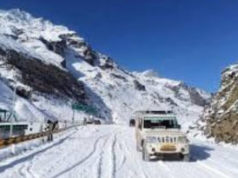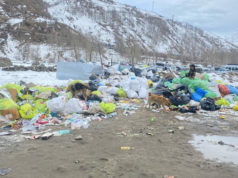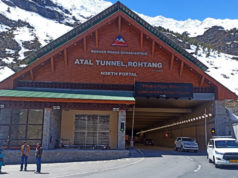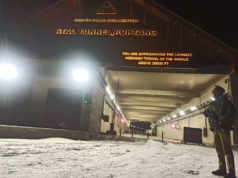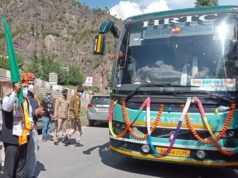Manali – In a remarkable yet concerning feat, Atal Tunnel, one of India’s engineering marvels, witnessed an unprecedented surge in traffic as a record-breaking 28,210 vehicles traversed through the tunnel in the last 24 hours. Of the total, 14,865 vehicles entered the tunnel from the south, while 13,345 vehicles emerged from the north portal, creating a balanced flow of traffic through this architectural wonder.
However, this surge in traffic has raised concerns about its ecological impact on the fragile Rohtang region of the Himalayas. The heavy influx of vehicles, coupled with the associated pollution, poses a threat to the well-preserved natural environment that has long been a hallmark of the area.
In a proactive move, authorities have implemented advanced measures, including drone surveillance at the Atal Tunnel North Portal in Sissu from Lahaul Police. This state-of-the-art monitoring system allows officials to observe and manage the flow of vehicles efficiently, ensuring the safety and security of travellers while minimizing the impact on the environment.
Local authorities and environmentalists are expressing apprehensions about the potential consequences of increased pollution and heavy traffic on the delicate ecology of the Himalayan region. The Rohtang region, known for its pristine beauty and diverse flora and fauna, may face challenges in maintaining its ecological balance in the face of such unprecedented vehicular movement.
Despite the enforcement of strict emission norms and traffic regulations, the sheer volume of vehicles passing through the region raises concerns about air and noise pollution. These factors can have detrimental effects on the local ecosystem, impacting wildlife habitats and the overall environmental health of the area.
As the region experiences a tourism boom, there is a pressing need for sustainable practices and responsible tourism to mitigate the ecological impact. Local authorities are urged to implement measures to minimize the carbon footprint of tourism activities and maintain the fragile balance of the Himalayan ecosystem.
While the Atal Tunnel continues to be a catalyst for economic growth and enhanced connectivity, the call for responsible tourism and environmental preservation becomes more imperative than ever. Striking a balance between progress and ecological conservation is crucial to ensure that the natural splendour of the Rohtang region remains intact for generations to come. Authorities are actively exploring ways to address these concerns and promote harmonious coexistence between tourism and the fragile Himalayan ecology.



